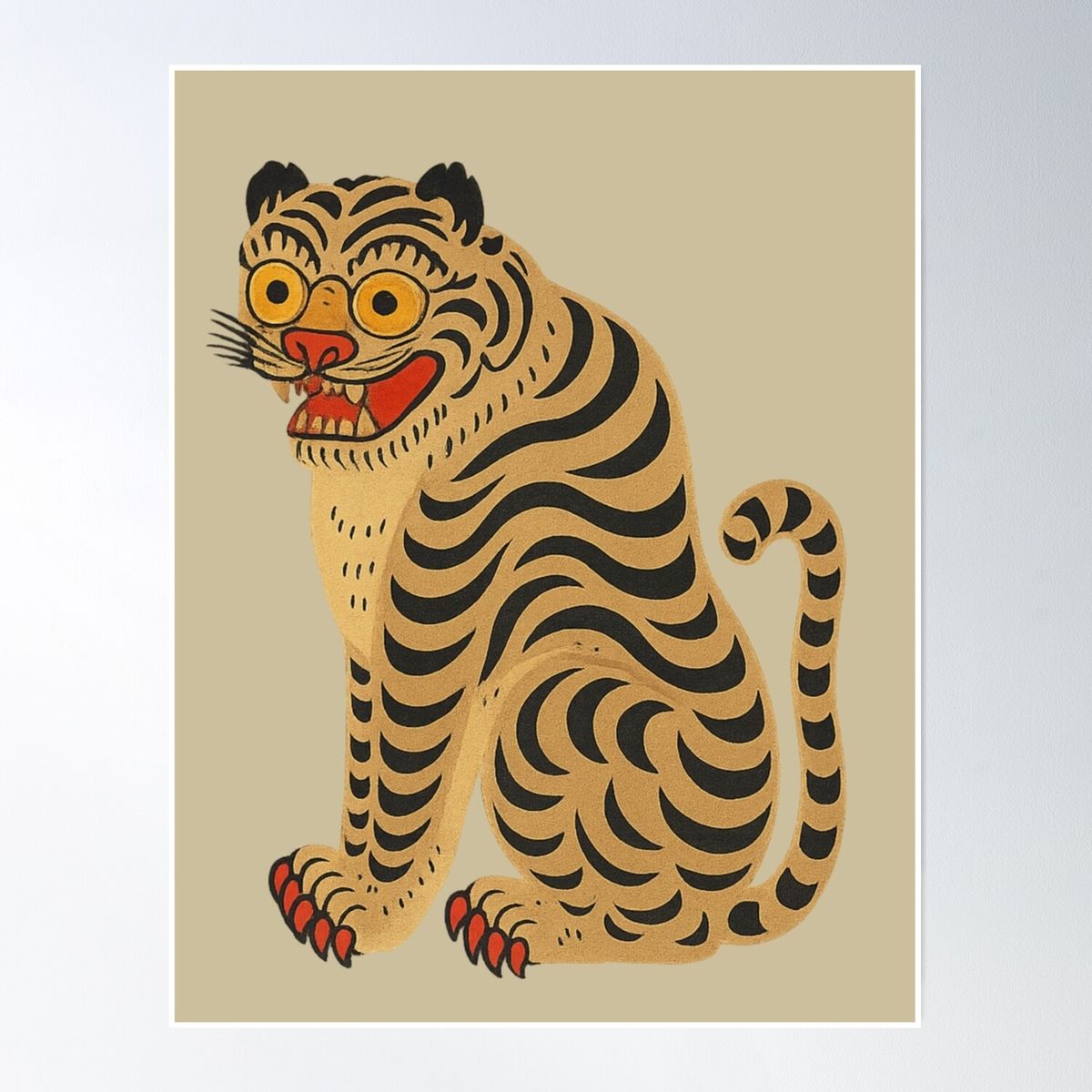History and Style
Minhwa, meaning "folk painting," emerged during the late Joseon Dynasty (1392-1910) in Korea. It was often painted by unknown artists for the common people, decorating their homes with images believed to bring good fortune, ward off evil spirits, or depict popular folklore. These paintings are characterized by their bold colors, simplified forms, and often humorous or symbolic themes.
Unlike court paintings, Minhwa artists were not bound by strict academic conventions, allowing for a freedom of expression that made the art accessible and beloved by the populace. Common subjects included tigers, dragons, birds, flowers, and scenes of daily life.
Babo Horangi (Foolish Tiger)
Among the most popular motifs in Minhwa is the "babo horangi" (바보 호랑이), or "foolish tiger." This depiction often portrays tigers not as fierce predators, but as rather naive, humorous, or even benevolent creatures, sometimes being outsmarted by smaller animals like magpies. These paintings often carried satirical undertones, subtly critiquing the powerful while entertaining the common people.
Connection to Derpy Tiger (Blue Tiger)
The character of Derpy Tiger (Blue Tiger) in KPop Demon Hunters draws inspiration from the "babo horangi" tradition. His mischievous yet lovable personality, combined with a slightly clumsy demeanor, reflects the humorous and less menacing portrayal of tigers in Minhwa. This cultural nod enriches Derpy's character, connecting him to a rich lineage of Korean folk artistry and storytelling.
